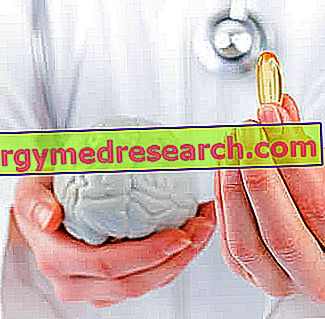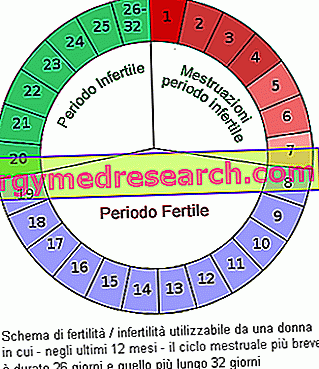What are Omega 3s?
The omega three family includes fatty acids: alpha linolenic acid (ALA), eicosapentaenoic acid (EPA) and docosahexaenoic acid (DHA).

For these reasons, everyone should respect a diet sufficiently rich in alpha linolenic acid, preferably also characterized by the further presence of eicosapentaenoic and docosahexaenoic.
Omega 3 and Brain
The omega three (in particular DHA and EPA) correlate to brain health from different points of view. In this sense, the main functions are:
- They constitute a very important structural element.
- Promote circulation thanks to:
- Vasodilatory capacity
- Blood fluidification
- Anti-atherogenic potential
- Prevent some cognitive disorders
- They could have a protective effect on the degeneration typical of old age
- They intervene positively on the mood in case of depression.
Omega 3 in Development
The omega three are fundamental structural components for the nervous tissue, therefore for the brain.
This function plays a decisive role above all in fetal development and in the nutrition of the first two years of life.
This means that the diet should be particularly rich in omega 3 (in particular EPA and DHA) especially in the case of:
- Pregnancy, during which nutrition is transmitted from the mother to the fetus.
- Breastfeeding, during which nourishment is transmitted from the mother to the infant (up to weaning). If artificial milk is used, it is advisable to pay close attention to the formulation of the product.
- Up to 18 months of age, although some studies point out that this remarkable importance of a diet rich in DHA persists until the twelfth year of age.
Omega 3 and Depression
Several experimentalists have found a correlation between the intake of omega 3 and mood.
In particular, EPA appears to be useful in the treatment of depression associated with bipolar disorder.
The effect is probably related to the EPA's ability to act as a precursor to prostaglandin E3. This, probably due to its anti-inflammatory function, is involved in the etiopathogenesis of depression (even if its precise mechanism is not known).
Studies that attempt to demonstrate the correlation between omega three and anxiety or psychosis are less relevant or incomplete.
Omega 3 and Cognitive Capacity
It concerns above all the third age.
An effective, albeit modest, link between good levels of omega 3 in the diet and improvement of mild cognitive problems has been demonstrated.
On the contrary, the link between omega three intake, prevention and improvement of Alzheimer's disease or dementia has not yet been consolidated.
However, there is a correlation between a diet rich in omega-3 and prevention of mental illness in the geriatric age. The same effects are not easily reproducible with nutritional therapies (or supplements) administered in the short or medium term.
Omega 3 and Brain Spraying
The omega three have an anti-atherogenic, vasodilating capacity on the arteries and fluidifying for the blood.
Since atherosclerotic plaques frequently affect the carotids by blocking them and impairing brain oxygenation, a diet rich in omega 3 can be considered preventive and beneficial.
Moreover, the fluidifying capacity hinders the formation of emboli and thrombi that can reach the cerebral vessels giving rise to the stroke.
The vasodilatory capacity of these essential fats can only be beneficial for the brain, especially in old age.
These are real effects but have a difficult impact to prove. Scientific studies have failed to correlate the intake of omega three with the prevention of cerebral ischemic events.
Avoid the Deficiency
The nutritional requirement of omega 3 for an adult corresponds to about 0.5-2.0% of the total calories, of which at least 250mg / day should consist of EPA and DHA.
Increase in case of:
- Gestation: + 100 or 200 mg of DHA
- Lactation: + 100 or 200 mg of DHA
- Between 0 and 24 months: + 100 mg of DHA
- Probably, in old age.
Especially in these cases, it is necessary that the nutritional intake of omega three is more than adequate.
Therefore we recommend:
- Guarantee the contribution of ALA: it is contained in foods of vegetable origin. It is advisable to consume the right portions of fruit, vegetables, legumes, whole grains and oil seeds. Some oils contain high concentrations; they could contribute significantly to the purpose if used raw and as a partial replacement for traditional condiments (olive oil or butter).
- Guarantee the contribution of EPA and DHA: they are contained above all in the fat fish of the cold seas and in the Italian blue fish. It is recommended to eat at least 2 and up to 4 servings per week. Certain food supplements such as fish oil, cod liver oil, squid oil, krill oil and algae are very rich in EPA and DHA.
- Ensure the integrity of omega 3 in the products that contain them. Foods rich in omega 3 must be fresh or defrosted and unprocessed. In addition, supplements need optimal conservation as they deteriorate significantly on exposure to light, heat and oxygen.
- Ensure the right balance between omega 3 and omega 6: to clarify what it is about, I suggest you consult the dedicated article.



